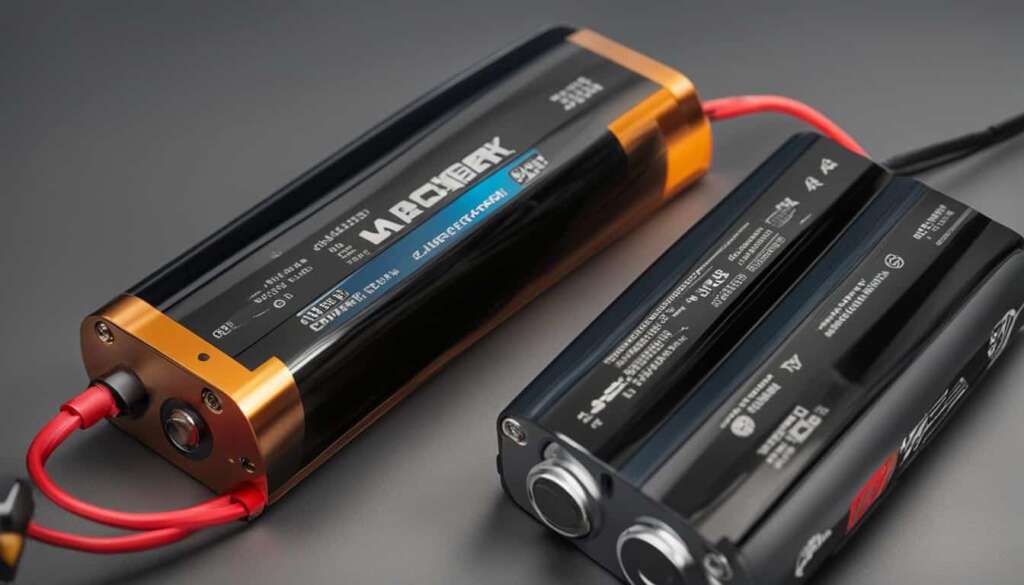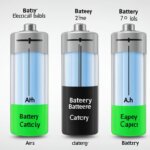Table of Contents
Battery performance is a crucial consideration when choosing electronic devices. To determine the capacity and potential longevity of a battery, it is important to understand the concept of milliampere-hour (mAh). mAh is a unit of measurement used to indicate the amount of current a battery can supply for one hour before it is fully discharged.
When assessing battery life and performance, mAh plays a significant role. While it is not the sole factor influencing battery life, a higher mAh rating generally means a longer-lasting battery. However, it is important to note that factors such as device type, screen brightness, and usage patterns also impact battery performance.
When choosing electronic devices, it is crucial to consider mAh alongside other factors. The overall value, features, and brand reputation of the device should also be taken into account. Electronic devices with higher mAh ratings may offer extended battery life, but their value and performance should be evaluated holistically.
In the following sections, we will delve deeper into the basics of electricity and battery technology to understand how mAh fits into the picture. We will also explore the various factors that can affect battery life and provide insights to help you make informed decisions when selecting electronic devices.
Basics of Electricity and Battery Technology
Before understanding mAh and its significance in battery capacity, it is important to have a basic understanding of electricity and battery technology. Electricity is the flow of charged particles through a conductor, and batteries store and release this electrical energy as needed.
The most common type of battery used in portable electronic devices is the lithium-ion battery. Lithium-ion batteries are lightweight, rechargeable, and have a high energy density. They consist of two electrodes, an anode, and a cathode, separated by an electrolyte. When charging, lithium ions move from the cathode to the anode, and during discharge, they move back to the cathode, creating an electric current.
One of the key advantages of lithium-ion batteries is their high energy density, which allows them to store a significant amount of energy in a compact size. This makes them ideal for portable devices like smartphones, laptops, and tablets.
However, battery life can be influenced by other factors such as temperature, charging habits, and device specifications. High temperatures can cause lithium-ion batteries to degrade faster, while improper charging habits like overcharging or using incompatible chargers can also impact battery performance. Additionally, factors like the device’s screen size, resolution, processor, and software optimization can affect battery life.
When choosing electronic devices, it is important to consider the overall value and features of the device, along with the mAh rating. The mAh rating indicates the battery capacity, but it is not the sole determinant of battery life. Considering other factors alongside the mAh rating can help make an informed decision.
Here is an example of the basic structure of a lithium-ion battery:
| Anode (-) | Electrolyte | Cathode (+) |
|---|---|---|
| Lithium compound | Lithium salt in a solvent | Lithium compound with a transition metal oxide |
Understanding the basics of electricity and battery technology provides a foundation for comprehending the significance of mAh in battery capacity. By evaluating mAh in conjunction with other factors, consumers can make informed decisions when selecting electronic devices.
Advantages of Lithium-ion Batteries
- High energy density
- Lightweight and portable
- Long cycle life
- Low self-discharge rate
- No memory effect
Factors Affecting Battery Life
Battery life is influenced by a variety of factors that impact the overall performance and longevity of electronic devices. One crucial factor is usage patterns. Different activities consume battery power at different rates. Streaming videos, playing graphics-intensive games, or running multiple apps simultaneously can drain the battery faster compared to light browsing or reading.
Device-specific features and settings also affect battery life. Factors such as screen size, resolution, processor type, and software optimization can have a significant impact. Larger screens and higher resolutions require more power, while efficient software can help conserve battery life.
In addition to internal factors, external conditions can also influence battery performance. Temperature, for example, plays a significant role. Extreme heat or cold can affect the chemical reactions inside the battery, causing it to degrade faster and reduce its overall lifespan.
Charging habits are another crucial aspect to consider. Improper charging practices, such as consistently charging the battery to 100% or letting it drain completely, can shorten its lifespan. It is generally recommended to keep the battery charged between 20% and 80% to maximize its longevity.
When selecting electronic devices, it is important to consider the mAh rating in relation to other device specifications. A higher mAh rating generally means a longer-lasting battery, but it is not the sole determinant of battery life. Taking into account usage patterns, external factors, and charging habits will help make informed decisions and ensure optimal battery performance.
FAQ
What does mAh stand for and why is it important for battery capacity?
mAh stands for milliampere-hour and it is a unit of measurement used to indicate the capacity of a battery. It represents the amount of current that a battery can supply for one hour before it is fully discharged. mAh is important in assessing battery life and performance.
Is mAh the only factor that determines battery life?
No, mAh is not the only factor that determines battery life. Factors such as device type, screen brightness, and usage patterns also play a role in battery life. However, a higher mAh rating generally means a longer-lasting battery.
What should I consider when choosing electronic devices based on mAh?
It is crucial to consider mAh along with other factors when choosing electronic devices. Factors such as the device’s overall value, features, and brand reputation should also be taken into account.
How does electricity and battery technology relate to mAh?
Electricity is the flow of charged particles through a conductor, and batteries store and release this electrical energy as needed. The most common type of battery used in portable electronic devices is the lithium-ion battery, which has a high energy density and is rechargeable.
What factors can affect battery life?
Battery life can be influenced by various factors, including usage patterns, screen size, resolution, processor, software optimization, temperature, and charging habits. External factors such as temperature can cause the battery to degrade faster, while improper charging habits can damage the battery.













